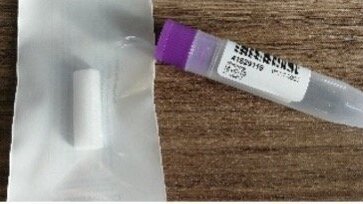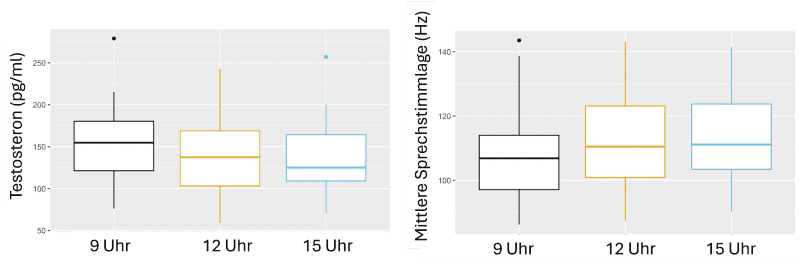
Depiction of soldiers and a kindergarden with teacher and children
Image: https://pixabay.com/Deutsche Forschungsgemeinschaft (DFG) – WE 5757/4-1, Projektnummer 430679437
Link to project homepages: Berufsgruppen, Geschlecht und sprachliche Variation de and Hormone und Stimme de
Project Description
The aim of this project is to promote the understanding of gender-specific linguistic variability that can be attributed to both biological and social factors. The biological aspect considers hormonal influences (A), the social factor is the occupational environment (B). Results of the project help to understand the phonetic and linguistic implementation of the construct "gender" in today’s society. The project takes an interdisciplinary approach, combining phonetics, linguistics, sociology, psychology, medicine and gender studies.
Part A of the project investigates the relationship between speech and hormones. On the production side, the influence of certain hormones (estrogen, progesterone, cortisol, testosteron) on gender-specific acoustic-phonetic variability is examined. On the perception side we will examine whether hormones affect a speaker’s perceived attractivity/masculinity/femininity and a listener’s sensitivity regarding gender-specific phonetic variability.
Part B analyses the relationship between phonetic gender typicality and occupational environment. In particular, the influence of gender(un)typical occupations (carpenter, kindergarten teacher) on gender-specific acoustic-phonetic variability is investigated. Besides an analysis of gender-/ /occupation-specific variation in production, listeners’ expectations and stereotypes regarding gender- and occupation-specific variability is examined.
Acoustic analyses for both parts comprise the salient phonetic differences between males and females (e.g., fundamental frequency, formants, sibilant spectra, voice quality).
Daily variation of testosterone and F0
Image: Melanie WeirichResources
A speech data base for each part of the project is being created containing acoustic recordings of read and spontaneous speech together with relevant metadata of the speakers (gender, gender identity, age, occupation, family status, hormone levels, etc.). (Still in progress)
Publications
- Weirich, M., Simpson, A. P., & Knutti, N. (2024). Effects of testosterone on speech production and perception: Linking hormone levels in males to vocal cues and female voice attractiveness ratings. Physiology & Behavior, 114615.
- Weirich, M. & Zahner-Ritter, K. (2023) Indexing femininity in vowel acoustics: A comparison between speakers in eastern and western parts of Germany. In: Proceedings of 20th International Congress of the Phonetic Sciences (ICPhS), Prague.
Conference Posters and Papers:
- Weirich, M., Hilliger, L., Knauft, D., Maljavin, A., Schure, N. & Ziemer, S. (2024) Hormonelle Einflüsse auf die Sprechstimmlage bei Frauen. P&P 20, Halle (Saale).
- Weirich, M., Simpson, A., Knutti, N. & Kiehntopf, M. (2023) Relationship between testosterone and fundamental frequency in men. Phonetik & Phonologie 19, Bern, Schweiz.
- Zahner-Ritter, K. & Weirich, M. (2022) Geschlechterrollenbild und phonetische Variation: Ein Vergleich zwischen Sprecher*innen im Osten (Jena) und Westen (Trier) Deutschlands (JETRI). Phonetik & Phonologie 18, Universität Bielefeld.
- Hilliger, L., Maljavin, A. & Weirich, M. (2022) Geschlechtsspezifische phonetische Variabilität & berufliches Umfeld. DGSS Tagung, FSU Jena.
- Meyer, V., Zahner-Ritter, K., Kanngießer, D. & Weirich, M. (2022): Die JETRI-Studie: Geschlechterrollenbilder und phonetische Variabilität in Ost- (Jena) und Westdeutschland (Trier). DGSS Tagung, FSU Jena.
-
Adrian P. Simpson
Department of Phonetics and Speech, Institute of German Linguistics, FSU Jena, adrian.simpson@uni-jena.de


